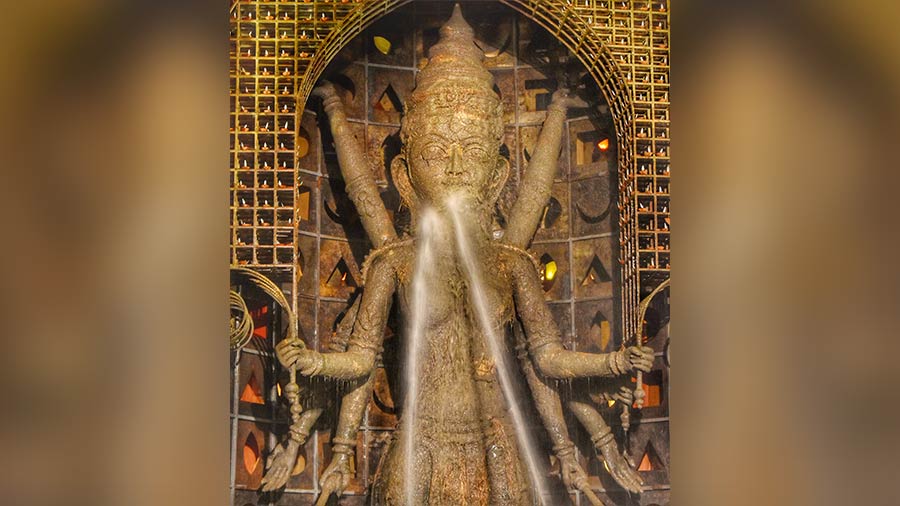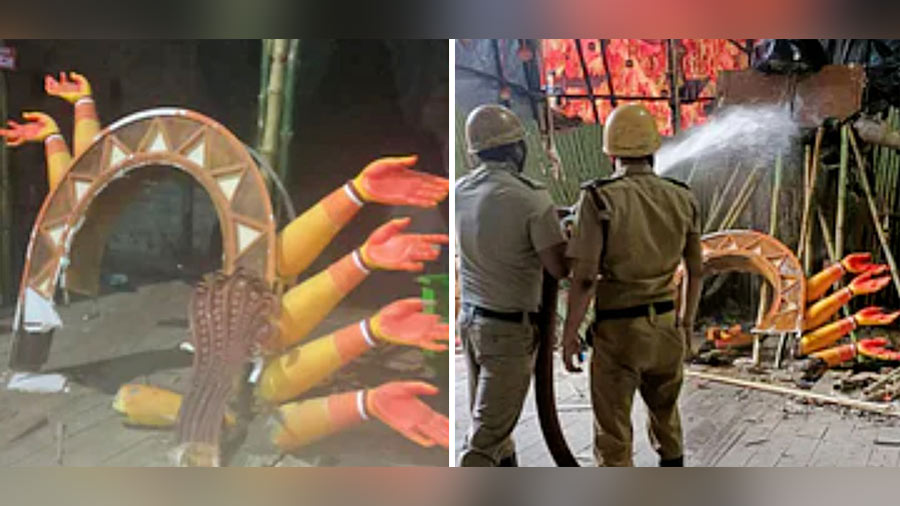In a bid to keep the Hooghly clean, on Friday, north Kolkata-based Tala Prattay Puja committee took a unique initiative.
They, instead, engaged personnel of the Fire Brigade department who used high-powered water jets to wash off the clay from the idol template. The whole process was executed within the pandal.
Not the first
Tala Prattay, however, is not the first club to have come up with an eco-friendly idea. There have been several pujas in and around the city which have taken several ‘green’ measures to save the Hooghly.
For instance, Tridhara Sammilani Club did the same during the last two years. All five idols were immersed in an artificial 400 sq ft tank built near the pandal. The pool contained 25,000 litres of water. Later, the idols’ frames were extricated from the solid waste disposal site at Dhapa.
Tala Pratya organisers said, “Every year hundreds and thousands of idols are dumped into the river. Even as most of the puja committees these days use eco-friendly colours, idol immersion is one of the main sources of Hooghly pollution. This year, we wanted to avoid that,” said Dhrubajyoti Biswas, adding that he was grateful to the Kolkata Municipal Corporation and the Fire Brigade Department.
Meanwhile, the Konnagar-based Mukherjee family had stopped idol immersion in Hooghly since 2021. “Instead, we have renovated a local water body for the purpose. Every piece of decoration we use is organic,” said Pratibha Mukherjee, a member of the family, adding that soon after immersion, the idol is pulled out of the water and kept aside.
Cheaper and easier
“Eco-friendly immersions not only prevent polluting the Hooghly and local water bodies but are also cost-effective and require less manpower. We realised this during the pandemic era the most,” said Debasish Kumar, one of the main organisers of Tridhara.
Eco-friendly
In the past few years, following a series of campaigns, the use of lead-based colours has gone down and today as most of the prominent pujas use eco-friendly colours. So, even if the idol is immersed in Hooghly, it would not pollute the river to that extent,” environmentalist Joydip Kundu, who organises a complete eco-friendly Puja, with solar power and pith-based decorations and vegetable colours at his ancestral house at Hatibagan said, “What Tridhara and Tala Prattay have done is commendable. I hope this continues and more clubs join the movement,” he added.

